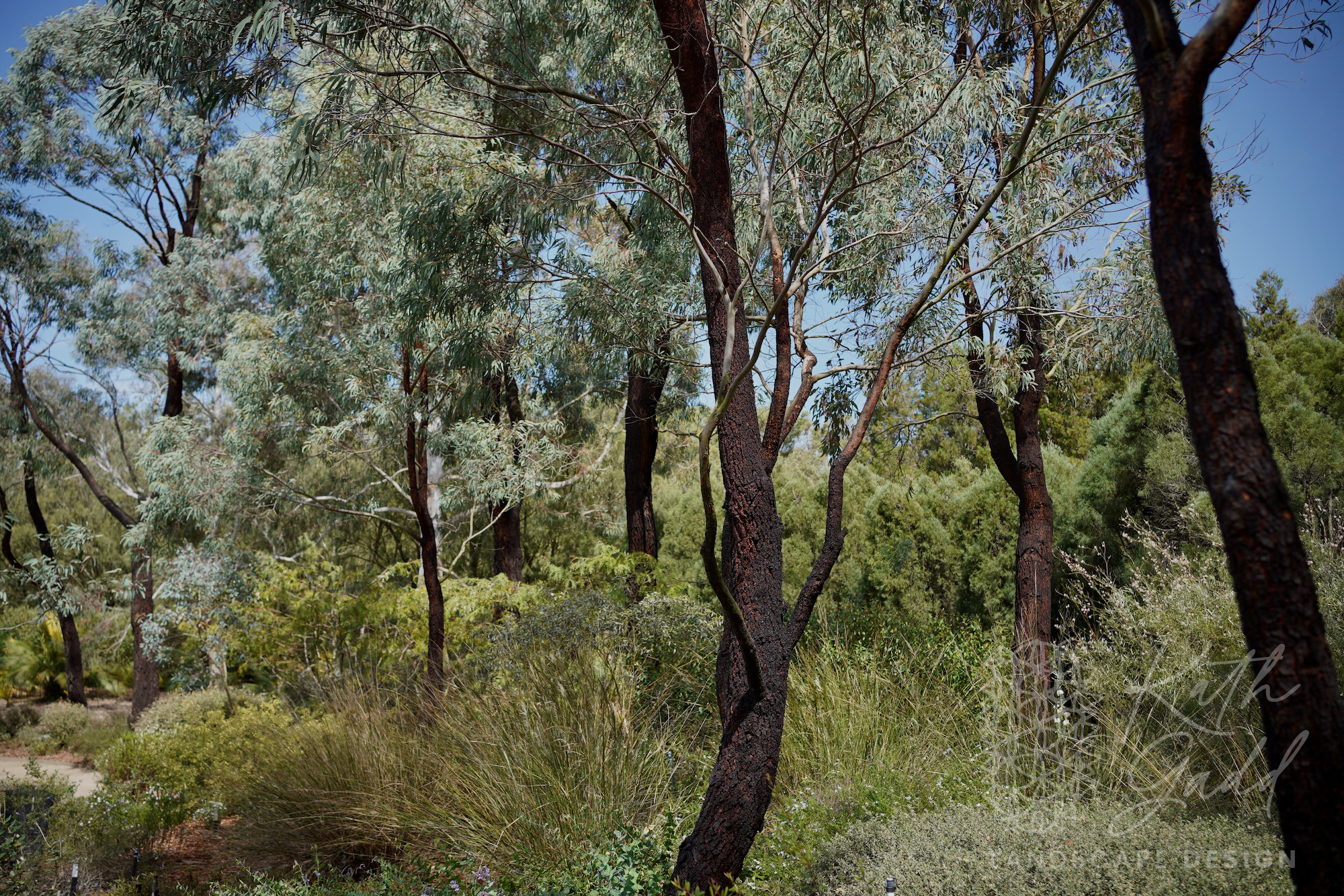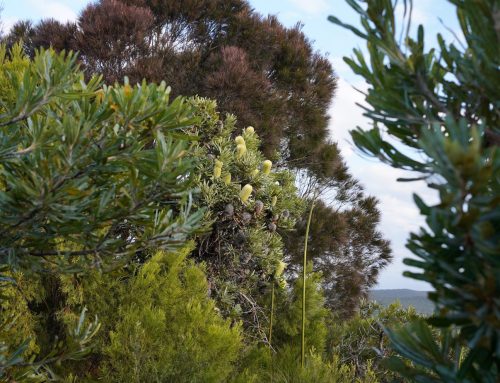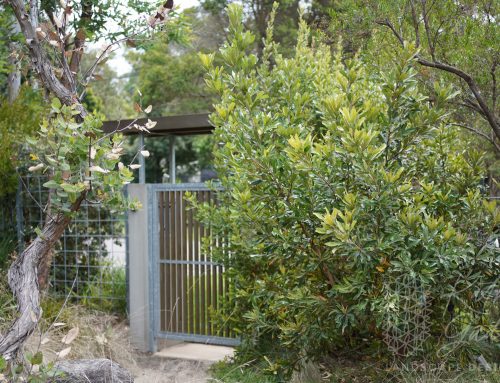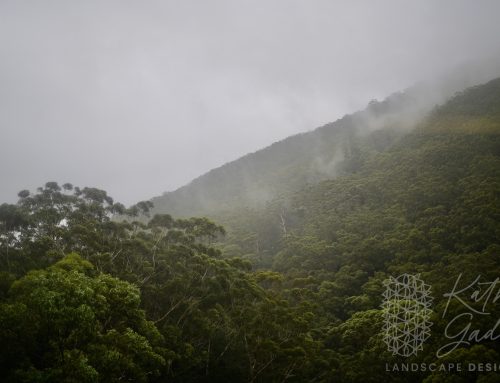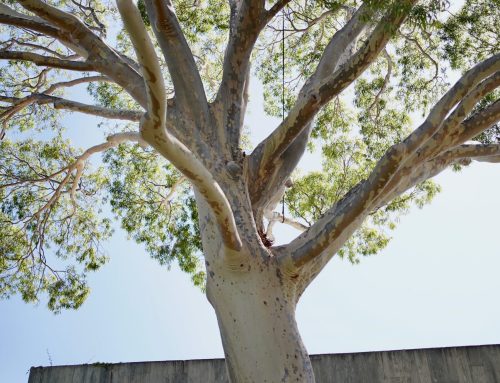I was in Melbourne last school holidays and I managed to convince my family to join me for a visit to Cranbourne Botanical Garden, a completely Australian garden. I have been several times before but this time things had grown enough to really begin to see the design intent of some areas and how harmony has been created using layers of texture. The garden beds running along the Eucalypt walk starting from the forest garden and forest clearing were so beautiful I was brought to tears.
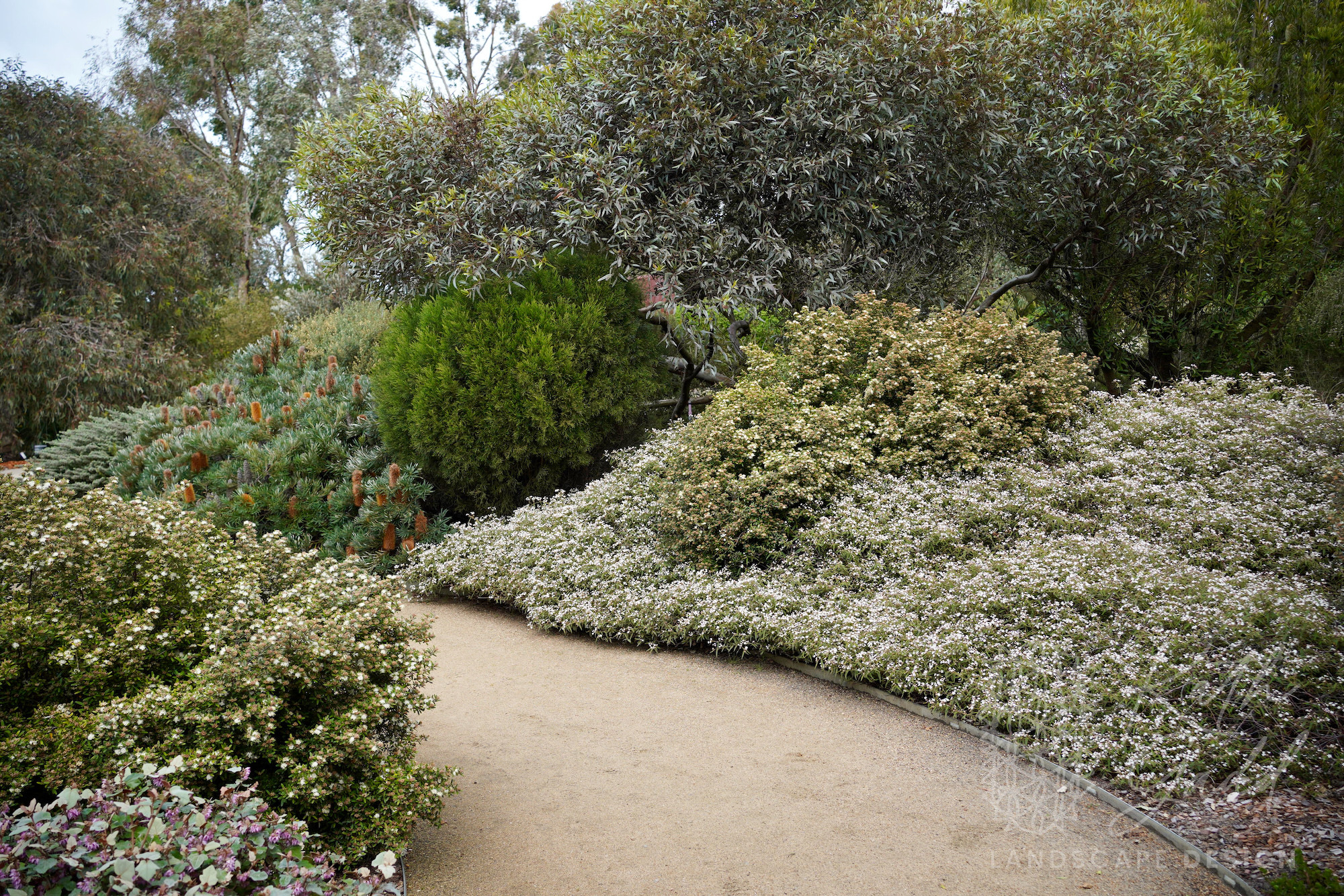
To create a garden with year-round harmony it is essential to include layers of colour far beyond flowers, everywhere I looked in these planting palettes there was an abundance of texture and form.
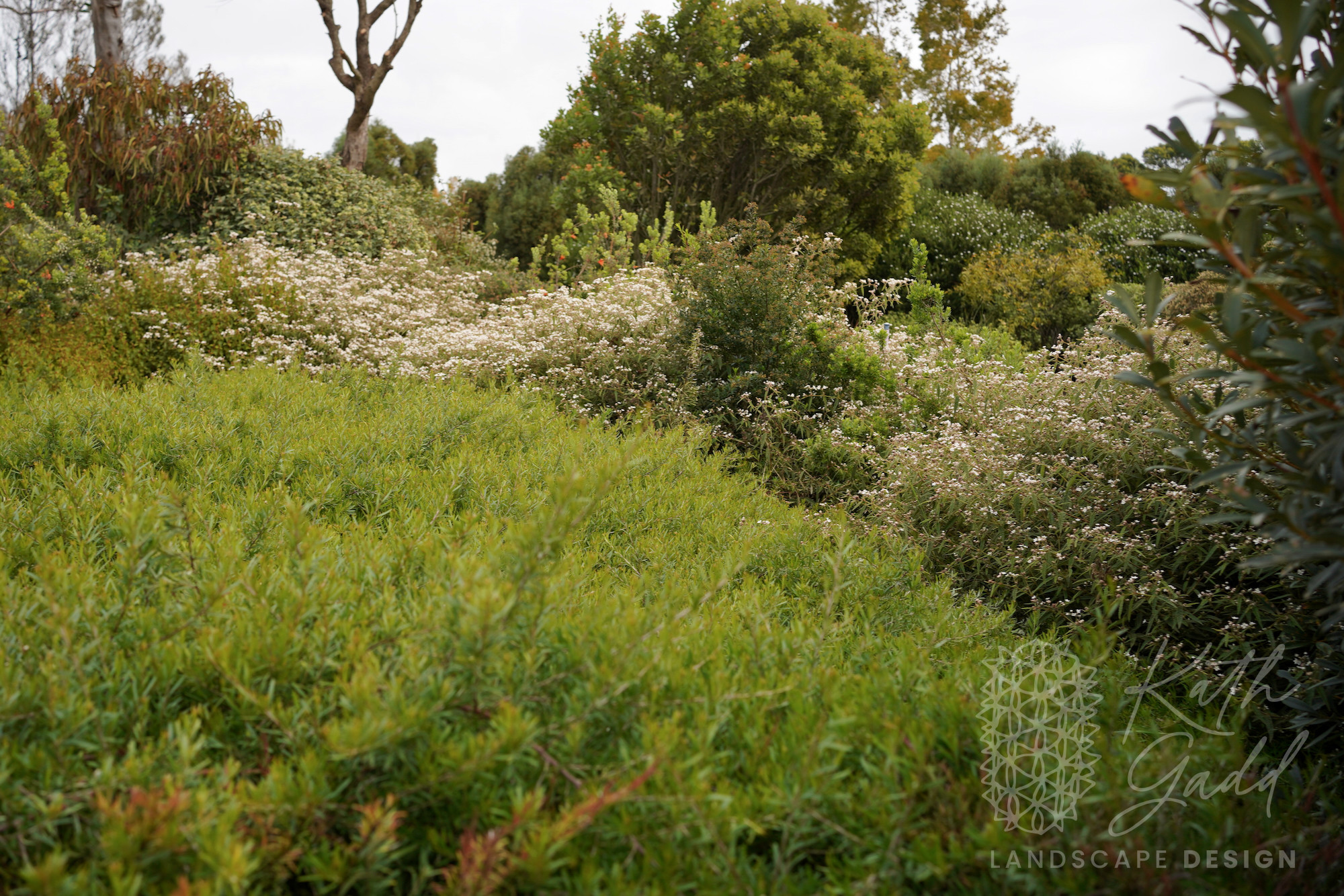
There is plenty of open space where groundcovers like Grevillea obtusifolia provide respite from the dense layering.
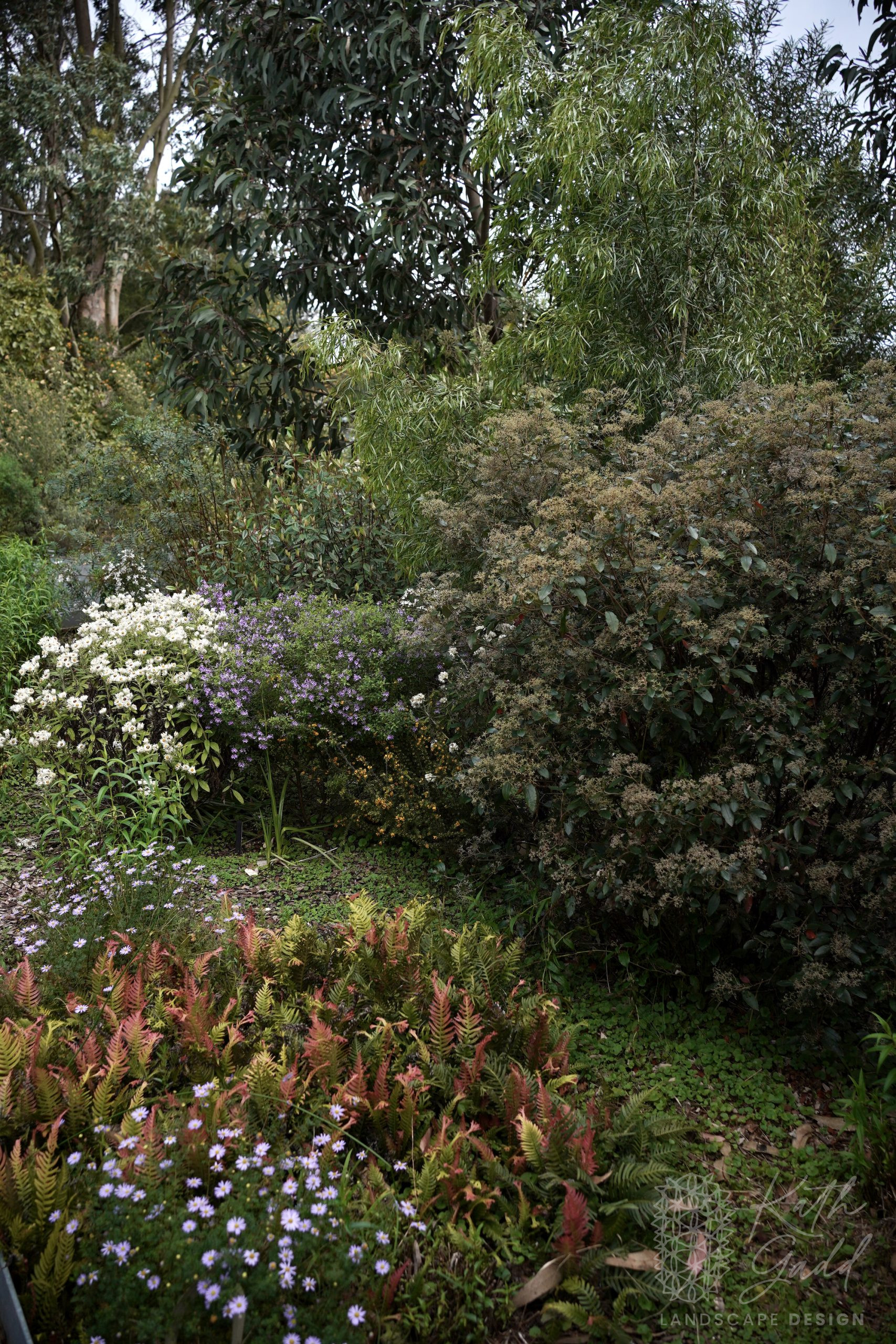
The ferns red new growth in this garden bed of dappled shade provides a lovely dash of colour and texture.
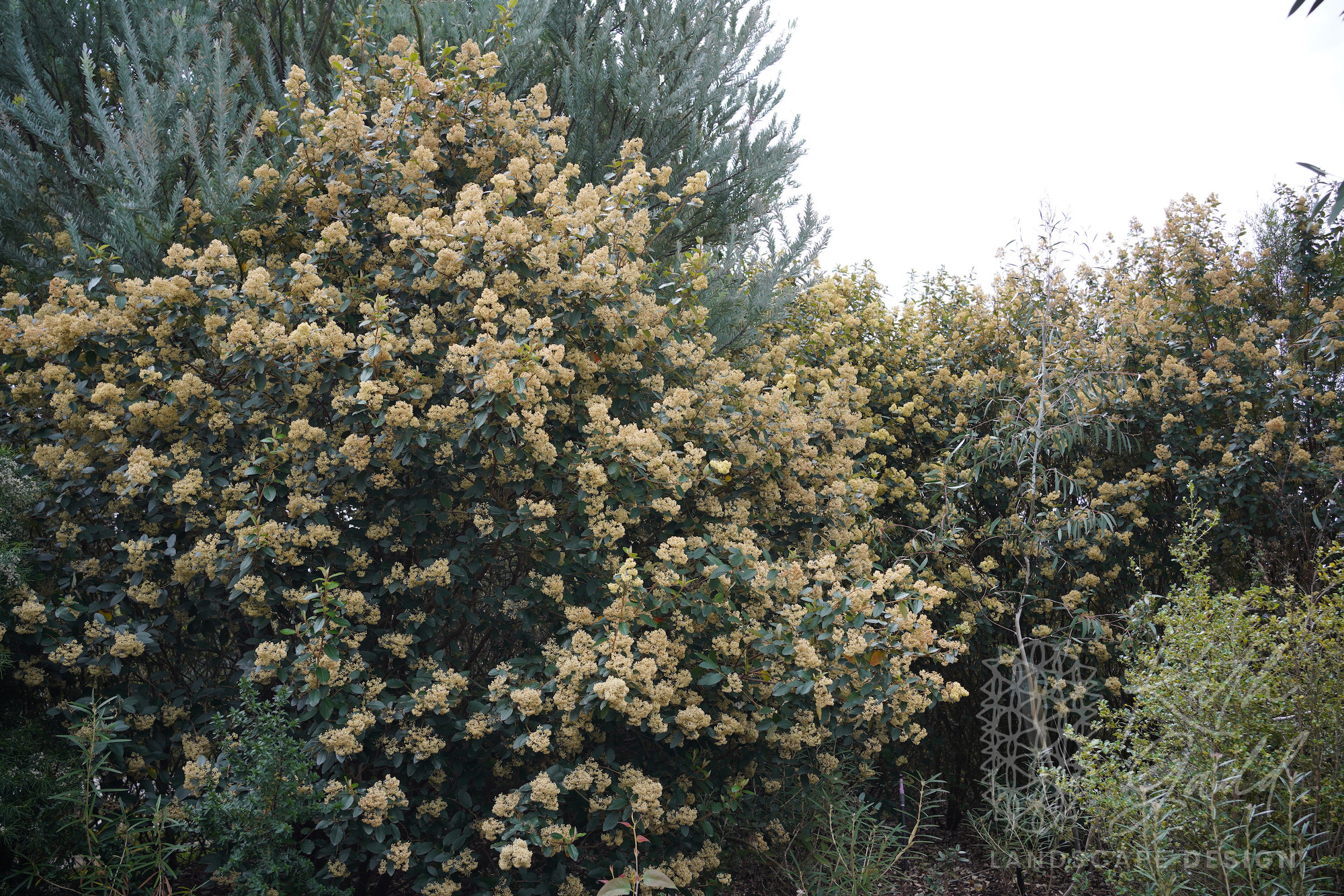
The Pomaderis is a huge stand out in the gardens at this time of year, they are used as a back drop species in many of the partly shaded garden beds, to screen and also create rooms within the garden.

In the image above the mixed native grasses offer a low layer alternative whilst also contrasting with the large rounded leaves of the Pomaderris.
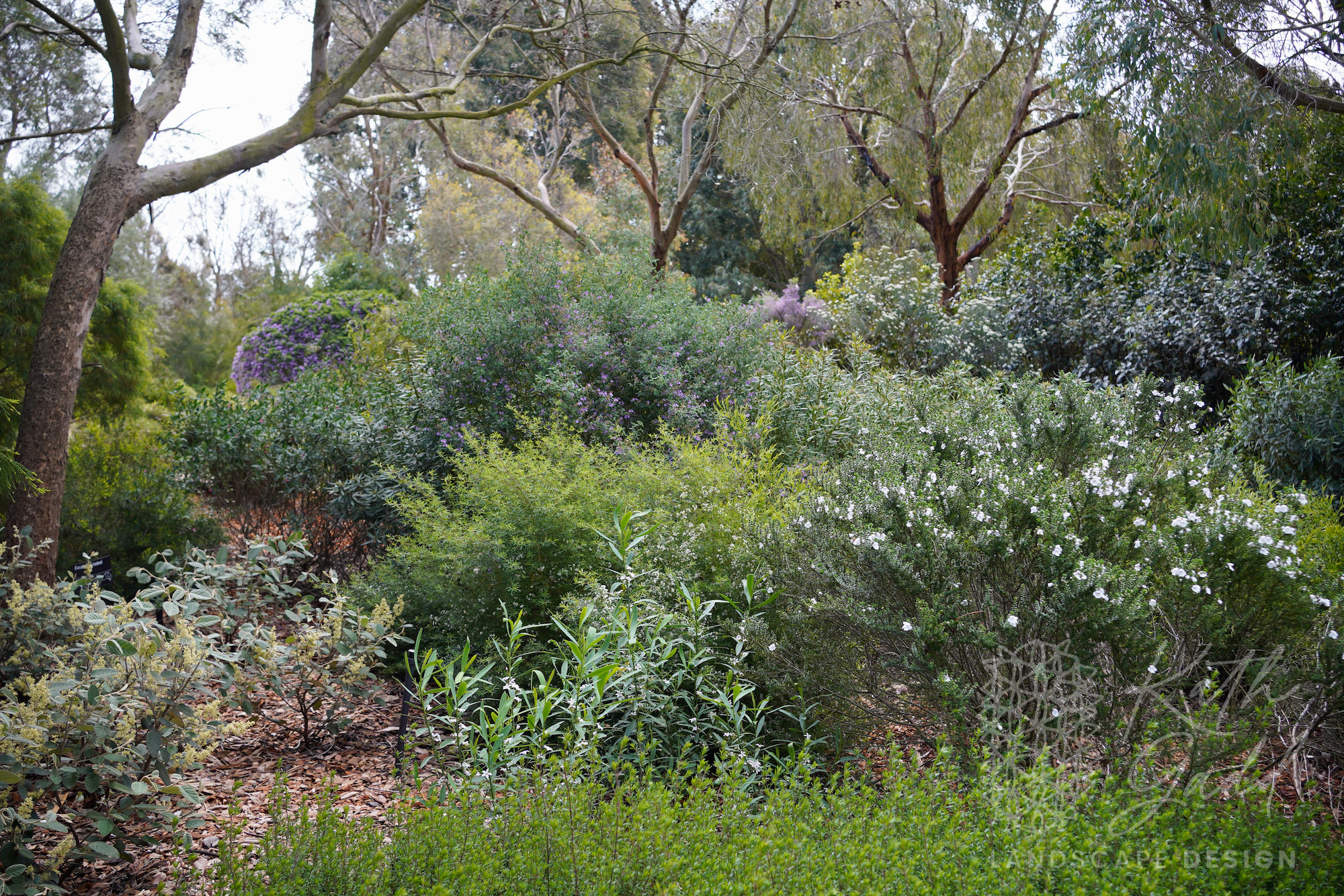
Under the canopy of the Eucalyptus in the Peppermint Garden a continuous understory layer has been created using a mixture of different species. They are being maintained at the same height however their foliage colour and shape creates contrasting layers there is a mix of Prostanthera, Philotheca, Westringia, Pomaderris and Ozothamnus.

The Ironbark Garden was my favourite, the vertical black trunks with their weeping silver leaves create a peaceful protected space, where the layers of planted scale away from the pathways.
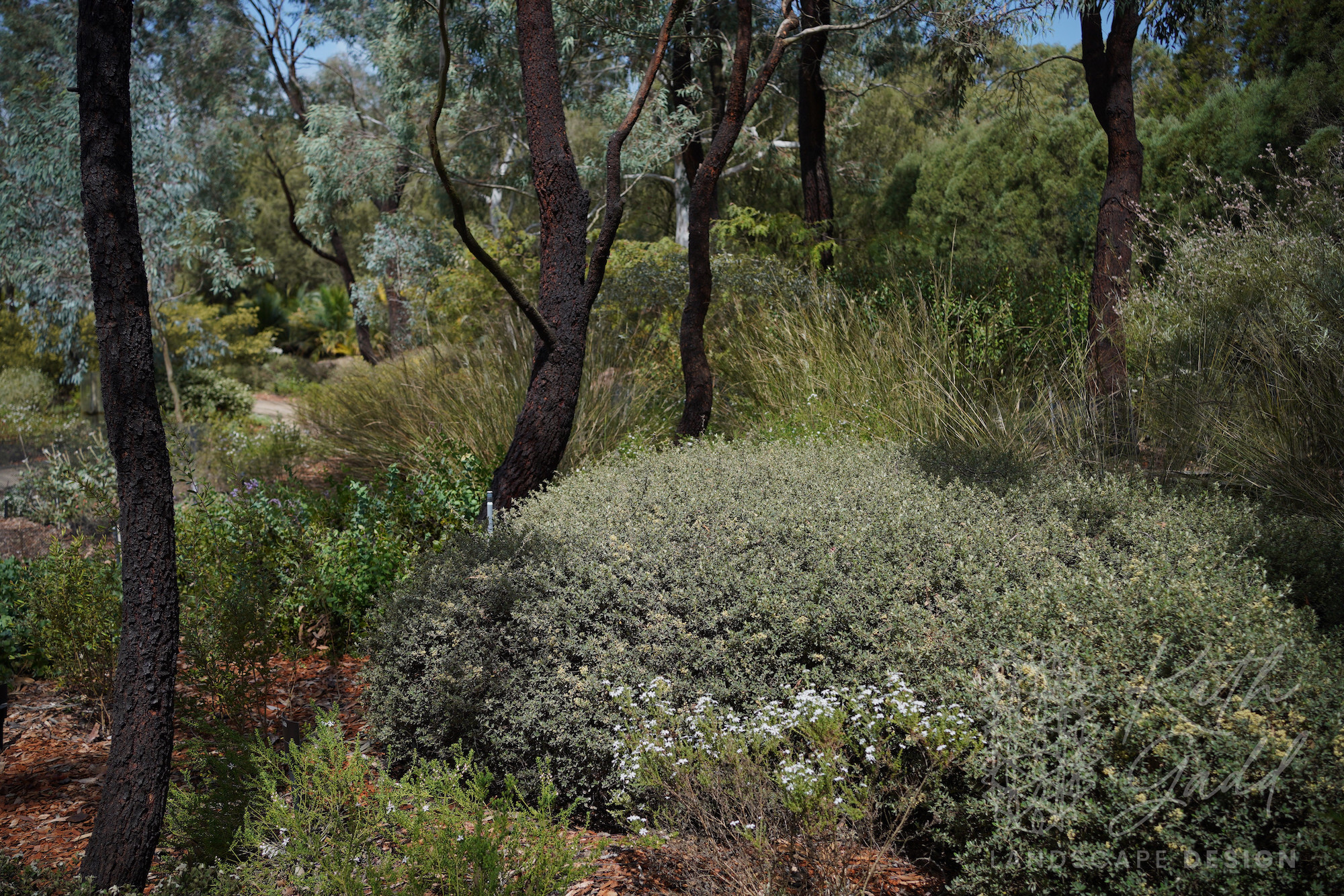
The silver foliaged plants highlight the trees striking bark, whilst the soft weeping taller grasses add a subtle movement.
